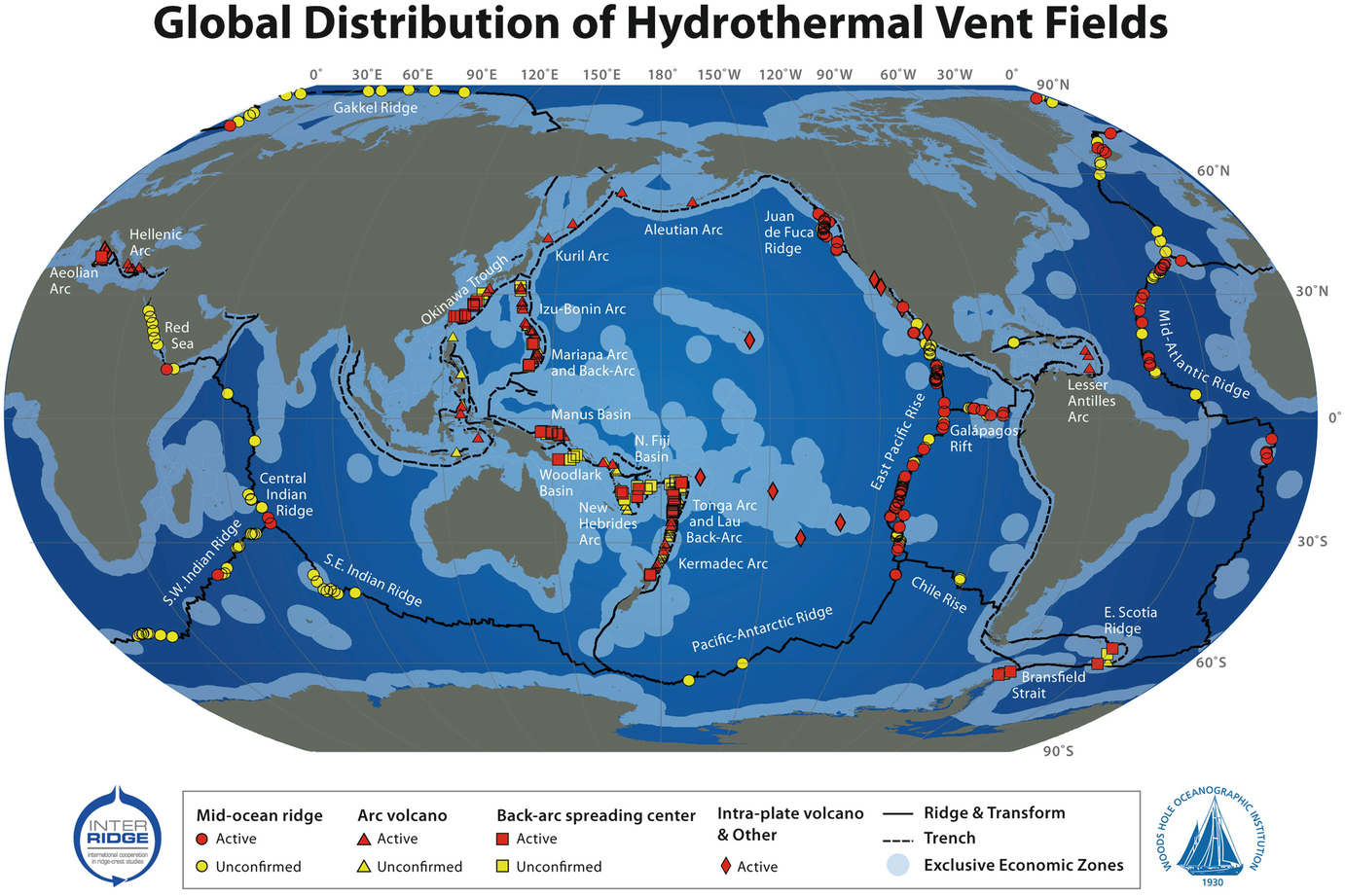Ages for ocean floor between the oldest identified magnetic anomalies and continental crust are interpolated by geological estimates of the ages of passive continental margin segments.
Estimated age of sea floor.
It is called a geomagnetic reversal.
Age of the north atlantic ocean basin.
The age spreading rate and asymmetry at each grid node is determined by linear interpolation between adjacent seafloor isochrons in the direction of spreading.
Because of this correlation between age and subduction potential very little ocean floor is older than 125 million years and almost none of it is older than 200 million years.
To determine the age of the ocean basin divide the distance in centimeters separating the continental shelves by the rate of sea floor spreading for the atlantic ocean basin.
The cooling plate model explains the age depth observations best for seafloor older that 20 million years.
164 million years years show formulas for calculations with units 622 896 000 cm 3 8 cm yr.
Scientists can determine the age of the seafloor by examining the changing magnetic field of our planet.
This has happened many times throughout earth s history.
The tectonic plates are constantly in motion and new surfaces are always being created.
Depth is better explained by a cooling lithosphere plate model rather than the cooling mantle half space.
Calculating sea floor spreading.
2005 114 whereas continental rocks have been dated to four billion years and the earth is thought to be about 4 6 billion years old dalrymple 2004.
In addition the cooling plate model explains the almost constant depth and heat flow observed in very old seafloor and lithosphere.
This is because the oldest sea floor is subducted under other plates and replaces by new surfaces.
Measure from the center of the spreading center to a known age point on the plate rather than from 65 ma on the eastern plate to 65 ma on the western plate.
The age spreading rate and asymmetry at each grid node are determined by linear interpolation between adjacent seafloor isochrons in the direction of spreading.
Ages for ocean floor between the oldest identified magnetic anomalies and continental crust are interpolated by geological estimates of the ages of passive continental margin segments.
The depth predicted by the square root of seafloor age derived above is too deep for seafloor older than 80 million years.
Very little of the sea floor is older than 150 million years.
Therefore the age of the ocean floor is not an accurate tool to measure the age of the earth.
Rate of spreading distance the sea floor moved length of time or r d t generally expressed as cm yr.
In essence oceanic plates are more susceptible to subductionas they get older.
Scientists use the magnetic polarity of the sea floor to determine the age.
Every once in a while the currents in the liquid core which create the earth s magnetic field reverse themselves.




























